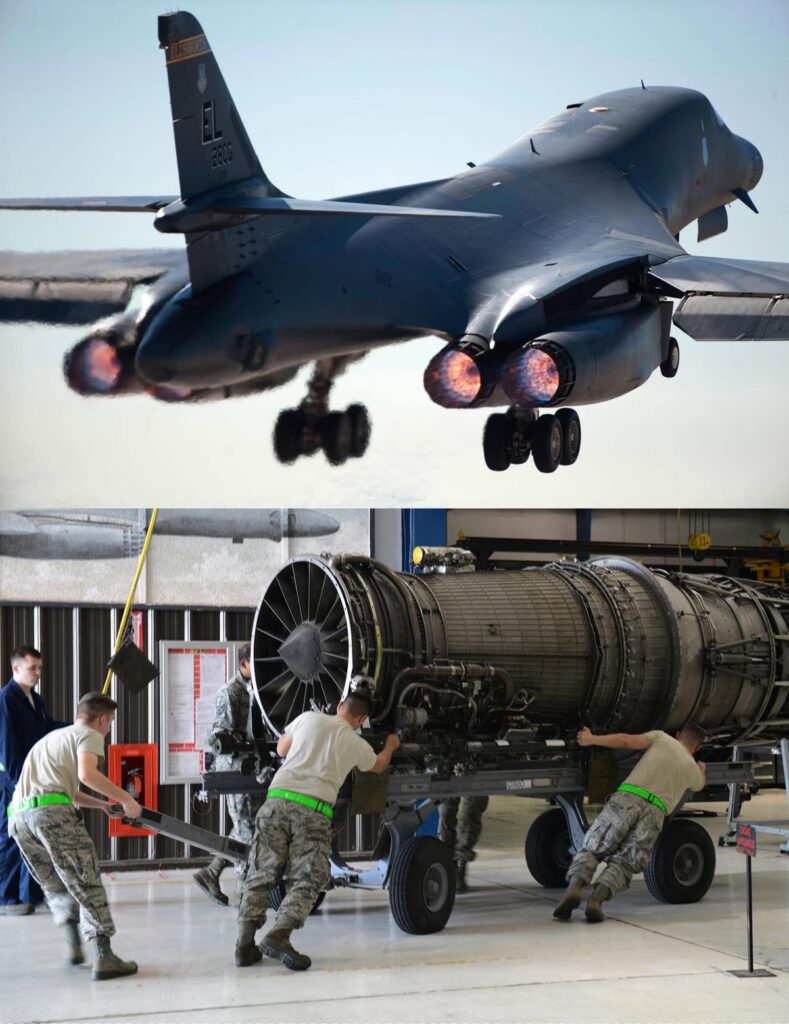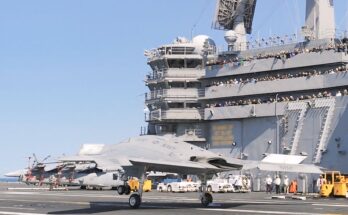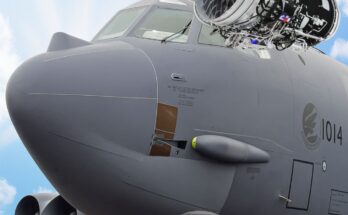
The B-1B Lancer is a long-range, multi-role bomber that represents one of the most versatile aircraft in the United States Air Force fleet. Known by its crews as the “Bone” (a play on “B-One”), the aircraft combines speed, payload capacity, and adaptability in a way that few other bombers can match. Designed during the Cold War, the B-1B was originally intended to deliver nuclear weapons deep into Soviet territory, but over the decades it has evolved into a highly capable conventional bomber, supporting missions around the world.
Developed by Rockwell International, now part of Boeing, the B-1B made its first flight in 1984 and entered operational service in 1986. The bomber was designed with variable-sweep wings, a feature that allows the wings to extend for efficient cruising and sweep back for high-speed flight. This design gives the B-1B the agility of a smaller aircraft, while still maintaining the endurance needed for intercontinental missions. Capable of flying at speeds exceeding Mach 1.2, the Lancer can carry more than 75,000 pounds of ordnance—more than any other U.S. bomber currently in service.
One of the defining features of the B-1B is its ability to perform a wide range of missions. Originally built for nuclear deterrence, the aircraft was later modified to carry only conventional weapons, reflecting changes in U.S. defense priorities after the Cold War. Today, it is a cornerstone of long-range strike capability, able to deliver precision-guided and unguided munitions against a variety of targets. Its range and payload make it ideal for global operations, and it has been used extensively in conflicts from Kosovo to Afghanistan and Iraq.
The power behind the B-1B comes from four General Electric F101-GE-102 afterburning turbofan engines. Each engine generates about 30,000 pounds of thrust, allowing the bomber to reach supersonic speeds despite its size. These engines are highly complex and require regular maintenance to ensure reliability. The bottom image likely shows maintenance personnel working on one of these F101 engines, a critical part of the bomber’s propulsion system. Engine maintenance is a routine but essential process that involves inspecting turbine blades, checking for wear, and testing various systems to ensure peak performance.
The B-1B’s engines are not only powerful but also designed for efficiency. The aircraft’s blended wing-body and engine nacelle design reduce radar cross-section, contributing to its low-observable characteristics. This gives the bomber an edge in penetrating hostile airspace, especially when flying at low altitude using terrain-following radar to avoid detection.
Even though the B-1B has been in service for nearly four decades, ongoing modernization programs continue to extend its lifespan and enhance its capabilities. Upgrades to avionics, communications, and weapons systems have kept the Lancer relevant in modern warfare. The aircraft remains a critical link between the older B-52 Stratofortress and the upcoming B-21 Raider, ensuring the Air Force maintains continuous long-range strike readiness.
The B-1B Lancer stands as a testament to American aerospace engineering—fast, powerful, and adaptable. Whether cruising at high altitude or skimming just above the terrain, it remains one of the most formidable bombers ever built, powered by the reliable thrust of the General Electric F101-GE-102 engine.


